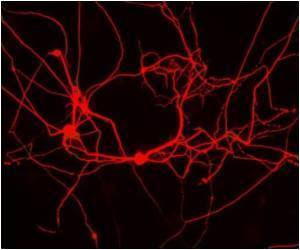
‘The newly discovered details about the prefontal neurons has major implications for the study of motivation, decision making, as well as addiction and other disorders.’
Tweet it Now
The UNC scientists, led by Garret Stuber, associate professor
in UNC's departments of psychiatry and cell biology & physiology,
examined two distinct populations of prefrontal neurons, each of which
project to a different brain region outside the cortex. The researchers found that as mice learn to associate a particular sound with a rewarding sugary drink, one set of prefrontal neurons becomes more active and promotes what researchers call reward-seeking behavior - a sign of greater motivation. By contrast, other prefrontal neurons are silenced in response to the tone, and those neurons act like a brake on reward-seeking.
Stuber, senior author of the study and member of the UNC Neuroscience Center, and colleagues obtained their findings with the use of three sophisticated and relatively new neuroscience tools: deep-brain two-photon imaging, optogenetics, and genetic techniques for labeling neurons by their projection targets in the brain. The successful combination of these tools heralds their future common use in defining the pathways and functions of many other brain networks to help uncover the roots of both normal and abnormal behavior.
The study, conducted by first authors and UNC postdoctoral fellows James Otis and Vijay Namboodiri focused on the dorsomedial (upper-middle) prefrontal cortex, or dmPFC.
"This region is critical for reward processing, decision making, and cognitive flexibility among other things, but how distinct populations of neurons within dmPFC orchestrate such phenomena were unclear," Stuber said.
Advertisement
"This simple experiment models a learning phenomenon that occurs in lots of different brain regions," Stuber said. "It is critical for motivation and decision making, and of course it can go awry in drug and food addiction, depression, and other neuropsychiatric disorders."
Advertisement
The dmPFC is known to output many of its chemical signals to two other brain regions, the nucleus accumbens (NAc) and the paraventricular nucleus of the thalamus (PVT), both of which are considered important for reward-directed behavior. Stuber's team found that the NAc-projecting neurons in the dmPFC were the ones that became increasingly excited by the tone, and the PVT-projecting neurons were the ones that became increasingly suppressed. The two sets of neurons turned out to be physically separate within the dmPFC only by a few hundred micrometers.
The team then used optogenetic techniques to artificially drive the activities of these neurons. Optogenetics allows researchers to use beams of light to activate specific populations of neurons. Driving the NAc-projecting neurons caused the mice to anticipate their sweet reward more intensely, with more licks after the tone. By contrast, driving the PVT-projecting neurons muted that anticipatory, reward-seeking behavior.
The findings represent a basic demonstration of how the dmPFC has evolved anatomically distinct neuronal populations that have functionally distinct control over behavior, Stuber said. And the discovery points to the existence of similar combinations of control mechanisms elsewhere in the brain.
He and his colleagues are now following up with studies of dmPFC neurons that project to other brain regions.
Source-Eurekalert













